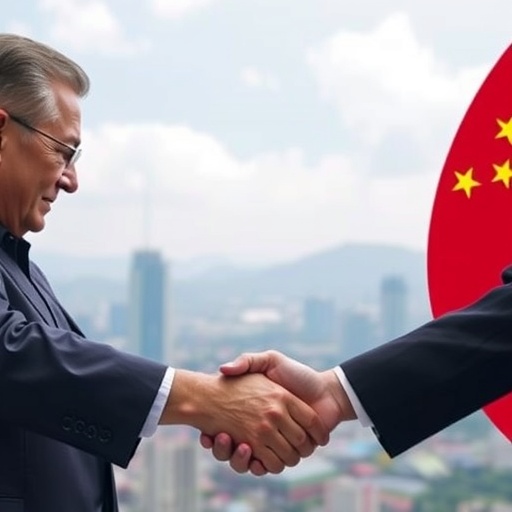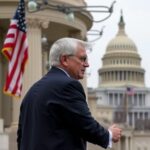U.S.-China Trade Breakthrough: Rare Earth Export Controls Averted in Landmark Framework Agreement
In a dramatic turn of events that has sent ripples through global markets, the United States and China have forged a new trade framework agreement, successfully averting a potential crisis over Rare earth minerals export controls. This deal, hammered out after intense negotiations, comes on the heels of President Donald Trump’s bold threat to impose 100% tariffs on Chinese goods, providing crucial leverage that forced Beijing’s hand. The agreement ensures uninterrupted access to these vital materials, safeguarding America’s technology and manufacturing sectors from supply chain disruptions that could have cost billions.
The stakes couldn’t have been higher. Rare earth minerals—17 elements essential for everything from smartphone magnets to electric vehicle batteries and defense systems—dominate China’s export market, with the country controlling over 80% of global production. Without this intervention, impending export controls announced by China earlier this year could have crippled U.S. industries reliant on these resources, exacerbating tensions in U.S.-China relations and threatening the stability of international technology trade.
Negotiations culminated in a virtual summit between U.S. Trade Representative Katherine Tai and Chinese Vice Premier He Lifeng, where both sides agreed to roll back restrictions in exchange for mutual commitments on fair trade practices. “This is a win for American workers and innovators,” Trump declared in a White House statement. “We’ve protected our supply chains without firing a shot in this trade war.”
Trump’s Tariff Ultimatum Ignites High-Stakes Diplomacy
The path to this agreement was paved with aggressive posturing and calculated risks. In late March, amid escalating U.S.-China relations strains, President Trump publicly warned of 100% tariffs on all Chinese imports if Beijing proceeded with tightening export controls on Rare earth minerals. This threat wasn’t mere bluster; it echoed the administration’s previous tariff salvos during the 2018-2019 trade war, which had already imposed duties on $360 billion worth of Chinese goods.
China’s initial move toward export controls stemmed from geopolitical leverage plays. In response to U.S. semiconductor export bans targeting Huawei and other firms, Beijing signaled restrictions on rare earth shipments, a move that analysts estimated could add up to 30% to production costs for U.S. electronics manufacturers. According to a report from the U.S. Geological Survey, America imports 80% of its rare earths from China, making the dependency a glaring vulnerability in the national supply chain.
Vice Premier He Lifeng, a key architect of China’s economic policies, entered the fray with a measured response. During a series of closed-door talks facilitated by neutral Swiss mediators, He emphasized China’s willingness to cooperate but demanded reciprocity on technology trade barriers. “Export controls are a defensive measure, not an offensive one,” He stated in a rare public comment post-negotiation. “This framework restores balance.”
The tariff threat proved pivotal. Market data from the days leading up to the deal showed U.S. stock indices, particularly in tech-heavy Nasdaq, dipping 2.5% on fears of shortages. By invoking the 100% tariff specter—potentially affecting $500 billion in annual bilateral trade—Trump’s administration created urgency. Insiders reveal that internal Chinese assessments projected a 15-20% hit to their export economy, prompting a swift pivot to diplomacy.
Historical context underscores the fragility of these talks. The 2010 rare earth spat, where China briefly halted exports to Japan, caused global prices to surge 500%. A repeat scenario loomed large, but Trump’s leverage—bolstered by alliances with Australia and Canada for alternative mining—tipped the scales. As one State Department official put it anonymously, “The president’s tough stance was the spark that lit the fire of compromise.”
Unpacking the Framework: Core Commitments on Rare Earth Flows
At the heart of the new agreement lies a multifaceted framework designed to stabilize rare earth minerals flows and broader supply chain dynamics. Signed virtually on April 15, the 25-page document outlines immediate suspension of China’s proposed export controls, guaranteeing quota-free access to key minerals like neodymium, dysprosium, and praseodymium for the next five years.
Key provisions include:
- Export Quota Relief: China commits to maintaining unrestricted exports of at least 60,000 metric tons annually to the U.S., up from current levels, preventing any licensing bottlenecks that could delay shipments.
- Joint Monitoring Body: A bilateral commission, co-chaired by U.S. and Chinese officials, will oversee compliance, with quarterly reviews to address any emerging technology trade disputes.
- Investment Incentives: In a concession to U.S. demands, China agrees to ease restrictions on American firms investing in domestic rare earth processing plants, potentially unlocking $10 billion in joint ventures.
- Reciprocity on Tech: The U.S. pledges to review export licenses for non-sensitive semiconductors, fostering goodwill in U.S.-China relations while protecting national security.
Statistics highlight the agreement’s scope. The International Energy Agency projects that global demand for rare earths will double by 2030, driven by the green energy transition. Without this deal, U.S. manufacturers like Tesla and General Electric could have faced delays in EV production, with estimates from the Boston Consulting Group suggesting a $50 billion annual economic drag.
Experts praise the framework’s pragmatism. Dr. Elena Vasquez, a supply chain analyst at MIT, notes, “This isn’t just about minerals; it’s a blueprint for de-risking technology trade. By tying rare earth access to investment, both sides create incentives for long-term stability.” Yet, skeptics point to enforcement challenges, citing past agreements like the Phase One trade deal that faltered on implementation.
The deal also addresses environmental concerns. China’s rare earth mining has drawn criticism for pollution; the agreement mandates adherence to international standards, with U.S. funding for sustainable practices potentially reducing ecological footprints by 25%, per UN estimates.
Rare Earth Dependency: Safeguarding America’s Tech and Defense Edge
The averted crisis shines a spotlight on America’s heavy reliance on rare earth minerals, a dependency woven into the fabric of its technological supremacy. These elements power the magnets in wind turbines, the lasers in medical devices, and the guidance systems in fighter jets. The Department of Defense alone procures over $150 million in rare earth-dependent components yearly, underscoring the national security imperative.
In the automotive sector, the shift to electric vehicles amplifies the need. Ford and GM report that a single EV requires up to 2 kilograms of rare earths, with U.S. production capacity lagging at just 15% of demand. The supply chain vulnerabilities exposed here could have echoed the 2021 chip shortage, which idled auto plants and cost $210 billion globally.
Export controls from China would have hit hardest in consumer electronics. Apple, which sources neodymium for iPhone speakers, warned in a lobbying filing that restrictions could raise device prices by 10-15%. Similarly, defense contractor Lockheed Martin highlighted risks to F-35 production, where rare earths are irreplaceable for stealth coatings.
Broadening the lens, the agreement bolsters U.S.-China relations by addressing intellectual property theft in technology trade. Provisions for tech audits aim to curb forced transfers, a long-standing U.S. grievance. As Commerce Secretary Gina Raimondo stated, “This framework secures our innovations while ensuring materials flow freely—critical for competing in the 21st-century economy.”
Domestic diversification efforts gain momentum too. The U.S. has invested $1.2 billion via the Inflation Reduction Act to revive mines in California and Texas, aiming for 25% self-sufficiency by 2027. Partnerships with allies, like the recent Australia-U.S. rare earth pact, further insulate against future shocks.
Industry Cheers, But Challenges Linger in Global Markets
Reactions from industry leaders have been overwhelmingly positive, with stock prices in mining and tech sectors surging 5-7% post-announcement. Nvidia CEO Jensen Huang called it “a lifeline for AI hardware development,” emphasizing the role of rare earths in chip cooling systems. Meanwhile, the Semiconductor Industry Association lauded the deal for stabilizing supply chain inputs essential for next-gen computing.
Economists weigh in on broader implications. A Moody’s analysis predicts the agreement could add 0.5% to U.S. GDP growth in 2024 by averting inflation spikes from material shortages. However, not all views are rosy. Trade hawk Senator Marco Rubio cautioned, “While this buys time, we must end our addiction to Chinese dominance in critical minerals.”
Global markets felt the relief immediately. Shanghai’s rare earth index climbed 8%, reflecting investor confidence in sustained export controls suspension. Yet, experts like those at the Brookings Institution warn of potential loopholes, such as China’s ability to redirect supplies to Belt and Road partners, indirectly pressuring U.S. allies.
In Europe and Japan, similar dependencies amplify the deal’s resonance. The EU, which imports 98% of its rare earths from China, is pushing for trilateral talks to extend benefits. As one analyst quipped, “Trump’s tariff thunderclap just cleared the air for everyone.”
Looking forward, the framework sets the stage for deeper collaboration. Upcoming summits in 2025 will tackle thorny issues like quantum computing standards and green tech sharing, potentially reshaping U.S.-China relations. With technology trade volumes projected to hit $1 trillion by decade’s end, securing rare earth minerals access is just the beginning. The U.S. now eyes accelerated domestic production and international alliances to build a more resilient supply chain, ensuring that innovation—and economic leadership—remains firmly in American hands.








